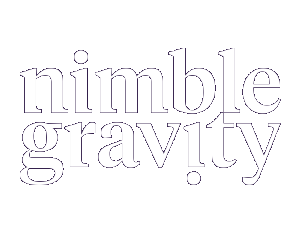Personalization has been the marketing buzzword for years. But as consumer expectations evolve and technology advances, simply addressing customers by name or recommending products based on past purchases is no longer enough. Enter hyper-contextual marketing, powered by generative AI - a paradigm shift that promises to transform how businesses engage with their audience.
Hyper-contextual marketing goes beyond traditional personalization by considering a multitude of real-time factors to deliver highly relevant, timely, and tailored experiences. It takes into account not just historical data, but also current context like location, weather, device, time of day, and even mood. Generative AI amplifies this approach by creating dynamic, adaptive content that resonates on a deeply individual level.
For C-suite executives and digital transformation leaders, understanding the potential of hyper-contextual marketing is crucial. It's not just about improving customer experiences; it's about gaining a significant competitive edge in an increasingly crowded digital landscape.
The Promise and the Challenge
Hyper-contextual marketing, when done right, can dramatically improve engagement, conversion rates, and customer loyalty. According to McKinsey’s Next in Personalization Report, companies excelling at personalization generate 40% more revenue from those activities than their average competitors. Imagine the potential when that personalization becomes hyper-contextual and AI-driven.
However, implementing such sophisticated strategies comes with its own set of challenges. Data privacy concerns, technological complexity, and the need for cross-functional collaboration often hinder adoption. Many organizations struggle to integrate disparate data sources or lack the AI capabilities necessary to process and act on real-time information effectively.
Generative AI: The Game-Changer
This is where generative AI steps in as a powerful enabler. Unlike rule-based systems that rely on predefined scenarios, generative AI can create unique, contextually relevant content on the fly. It can analyze vast amounts of data, identify patterns, and generate personalized messages, offers, or even entire customer journeys that adapt in real-time to changing contexts.
For example, a retail bank could use generative AI to create personalized financial advice that takes into account not just a customer's transaction history, but also real-time factors like local economic conditions, life events detected through social media activity, and even sentiment analysis from recent customer service interactions. The result? Hyper-relevant communication that feels less like marketing and more like a valued personal advisor.
Practical Implementation: Where to Start
For organizations looking to harness the power of hyper-contextual marketing and generative AI, here are some strategic steps to consider:
1. Data Integration and Quality: The foundation of effective hyper-contextual marketing is comprehensive, high-quality data. Focus on integrating data silos across your organization and ensuring data accuracy and freshness.
2. AI Capability Building: Invest in developing or acquiring AI expertise. This might involve partnering with specialized firms, upskilling existing teams, or strategic hiring.
3. Use Case Prioritization: Start with high-impact, feasible use cases. Look for areas where improved contextual relevance can significantly enhance customer experience or drive business outcomes.
4. Ethical Considerations: Develop clear guidelines for AI use, ensuring transparency and respect for customer privacy. This is not just about compliance; it's about building trust.
5. Iterative Testing and Learning: Implement a robust testing framework to continuously refine your approach. What works in theory may need adjustment in practice.
Measuring Success
To gauge the effectiveness of your hyper-contextual marketing efforts, consider metrics like:
- Engagement rates across different contexts
- Conversion rate improvements
- Customer lifetime value changes
- Net Promoter Score (NPS) or other satisfaction metrics
- Return on Marketing Investment (ROMI)
It's crucial to establish baseline measurements before implementation to accurately assess impact.
Looking Ahead
As generative AI continues to evolve, we can expect even more sophisticated applications in hyper-contextual marketing. Future systems might predict and proactively address customer needs before they're even articulated, or create entirely new product offerings tailored to emerging contexts.
For business leaders, the key is to start building the foundational capabilities now. Those who can effectively harness the power of hyper-contextual marketing and generative AI will be well-positioned to lead in the next era of customer engagement.
In conclusion, hyper-contextual marketing powered by generative AI represents a significant leap forward in how businesses can connect with their customers. It's not just about being personal; it's about being personally relevant in every moment. As you consider your digital transformation roadmap, make sure this powerful approach is on your radar. The future of marketing is not just personalized – it's hyper-contextual, dynamic, and AI-driven.












